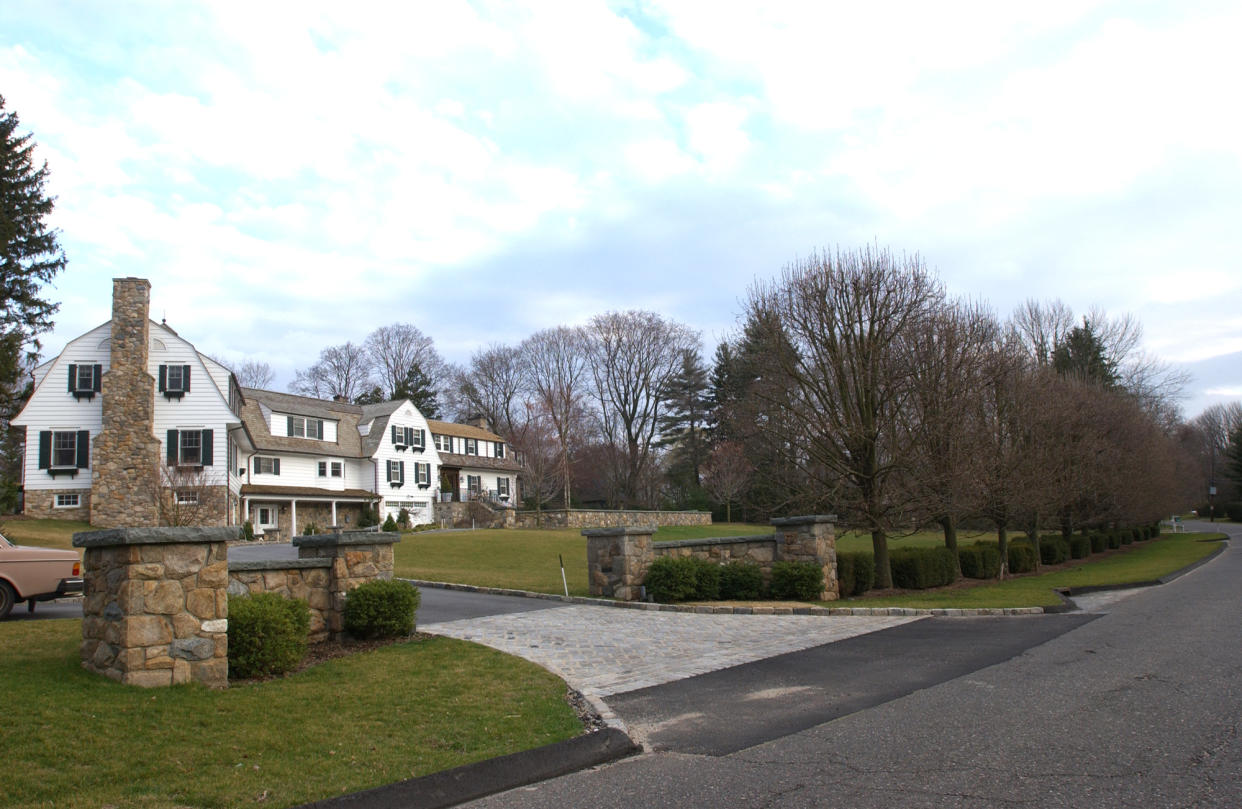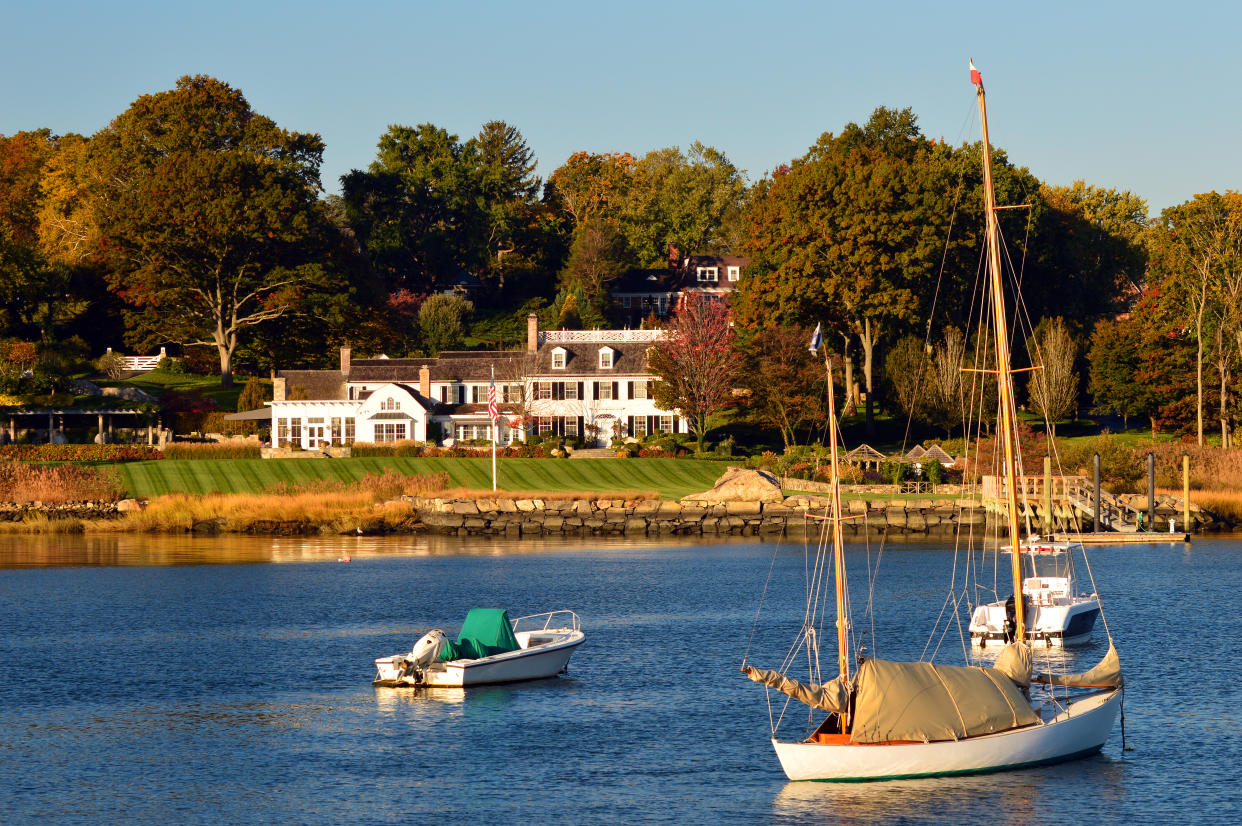The hottest housing market of 2020
In the aftermath of COVID-19, many believed the housing market would stall as Americans feared making new investments in big-ticket items like homes during uncertain times. But since the spring,housing has been one of the few, if not only, bright spots in the economy. And this local market, in particular, has been revived during the outbreak.
Read more: Buying a house: What you need to know about home ownership
Greenwich, Conn. is mostly known as the suburban enclave, within a 60-minute drive to New York City, for hedge fund managers and Wall Street executives. But when COVID-19 put the U.S. in lockdown, Americans in desperate need of more square feet to work from home and outdoor space started flocking to suburbs like Greenwich. And suddenly the tony town in Fairfield County became an option not just for the ultra-wealthy, even though the properties there aren't exactly cheap. Home prices and sales activity in Greenwich have soared at a record pace this year, making it this year’s hottest housing market.
“When COVID came along it turned the Greenwich market back on its feet,” said Mark Pruner, sales agent and director of new development at Berkshire Hathaway HomeServices New England.

Greenwich, and most of Fairfield County, was one of the weakest housing markets in the U.S. for the past five years until 2020, according to experts. There were a record 91 sales in November alone, more than double the number the same month last year, according to Pruner. That number was more than the 10-year average sales during the busiest month (June), when there’s usually an average of 86 sales.
“Greenwich was clearly near the bottom in terms of activity and price reductions before the pandemic,” said Lawrence Yun, chief economist at National Association of Realtors (NAR). “Suddenly it made a sharp turn upwards, it’s quite remarkable in terms of a U-turn.”
There were 847 sales this year so far, up 61% from 526 last year, according to the Greenwich Multiple Listing Service. In the third quarter, single-family sales surged to 183 — its highest level in at least a decade, according to a report by brokerage Douglas Elliman and appraisal firm Miller Samuel. When the year comes to a close in two weeks, Pruner anticipates a total of $2.3 billion worth of homes sales, up 180% from 2019.
The heightened sales activity is driving prices up and sending inventory down. The median sales price is up 12.5% to $2.25 million from a year ago. In November, the number of properties for sale was down 27% from a year ago and there was just under six months of supply of homes on the market. Even more telling are the price points of that supply. Six-months supply usually indicates a seller’s market and last year it was a seller’s market for up to $1 million properties, according to Pruner, but this year that went up to $4 million.
“Much of the top performing markets have been luxury secondary home markets, but Greenwich is a luxury primary market and that makes it such a standout,” Jonathan Miller, CEO of Miller Samuel, said. “Other than the lockdown itself, the housing market never paused.”
That’s a stark contrast from four years ago, when Starwood Capital Group CEO Barry Sternlicht said Greenwich was the worst housing market in the U.S. He even said at a conference at the time: “You can’t give away a house in Greenwich.” In recent years, along with other high-flying financiers, Sternlicht relocated himself and Starwood to Florida, mostly due to higher income taxes implemented by the state of Connecticut in the early 2000s. The Great Recession also took its toll on Greenwich. Big $1 million-plus homes were simply frowned upon or just not practical during or after the financial crisis. And last year, the Tax Cuts and Jobs Act of 2017 and the law’s SALT $10,000 deduction cap for homeowners hit Fairfield County homeowners, further softening the market, according Pruner.
“Because of the long downturn, people who didn’t want to or have to did not move so we had a lot of houses that people weren’t interested in selling,” he said, until now. He said at the current rate of sales “we are rapidly running through this shadow inventory of homeowners that have been waiting years for this market.”
The ‘mini-country club effect’
There’s no question that Greenwich, a town with a population of about 60,000, has been a beneficiary of the migration out of New York City, the epicenter of the pandemic at the COVID-19 onset in March. Like everything else in the Big Apple, the housing market froze during the lockdown.
“One of the first wave of buyers came from the Manhattan rental market,” said Miller. The Manhattan housing market, rental in particular, ground to a halt during COVID-19. And historically low mortgage interest rates have also encouraged some renters who had originally been on the fence about buying a home to take the plunge.
During the first wave of COVID-19, Jennifer Leahy, sales agent at Douglas Elliman in Greenwich, said she was getting multiple bids on every property she had listed. Leahy notes that Greenwich homes are pricey but buyers get much more space than they would in Manhattan for the same price. Not to mention “you get the best of both worlds, proximity to New York City and country living,” she added.
The average price per square foot in the third quarter for a condo or co-op apartment in Manhattan was $1,532, while a single family home in Greenwich was $585 and a condo in Greenwich was $522, according to the Elliman/Miller Samuel report.
“Greenwich is more like a small city than a town in that we have different zones: multi-family, downtown living, country living,” Pruner said, adding there’s also waterfront, acres of land and lots of home amenities that provide the “mini-country club effect.” Think pools and tennis courts.

“Last year many buyers saw a pool as an additional expense that required daily maintenance. In the COVID era, a private pool means summer fun, without having to be part of the crowds at the beaches and clubs,” said Pruner. ”People also want room for other adult family members to join them when needed. Buyers also need two, three or even more home offices/remote schooling locations. What was not needed last year is now a requirement for many buyers.”
And while a COVID-19 vaccine has landed in the U.S. and vaccination efforts have begun, experts don’t anticipate demand for homes in the ‘burbs to subside, at least until the latter half of 2021. New contracts, an indicator of future sales activity as home sales close a few months after signing, in Greenwich last month tripled year-over-year. “It’s the only region in the New York metro that hasn’t plateaued or cooled off,” said Miller.
“It’s been crazy,” Leahy said. “It’s December and I’m showing [homes] like it was the height of the spring market.”
Amanda Fung is an editor at Yahoo Finance.
Follow Yahoo Finance on Twitter, Facebook, Instagram, Flipboard, SmartNews, LinkedIn, YouTube, and reddit.
Find live stock market quotes and the latest business and finance news
For tutorials and information on investing and trading stocks, check out Cashay
